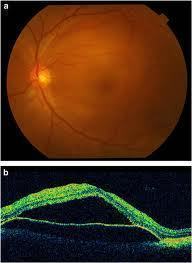Optical Coherence Tomography
Optical coherence tomography is the field of study in which light is used to see through a subject material’s surface. It is most often used in medicine in order to analyze a biological sample such as an eye, artery, or other body part. Although optical coherence tomography is a relatively new technique, it is considered much safer than other microscopy forms, it is cheaper to implement, and provides better results.
How Optical Coherence Tomography Works
Optical coherence tomography involves the use of a near-infrared light that is directed at a subject. While the subject absorbs or scatters most of the light, a small portion of the light is reflected and collected in order to produce an image of the subject’s interior. This process can be repeated as many times as necessary in order to create a complete image or see a subject from various perspectives. In fact, optical coherence tomography produces three dimensional micrometer resolution layouts of virtually any subject material’s interior.
Applications
Optical coherence tomography is used in ophthalmology to analyze the interior of a patient’s eye, particularly the retina. It is also used in other medical fields to see inside of arteries, muscles, and other tissue samples. Additionally, optical coherence tomography can be found in the art industry where it is used to analyze multiple layers of a painting for preservation purposes.
Advantages
Optical coherence tomography has several advantages over other imaging techniques. It produces three dimensional images of a subject’s interior and detects the difference between objects on a microscopic level. Optical coherence tomography does not require any subject preparation or invasive maneuvers and does not pose any threat to the subject material.
Disadvantages
Optical coherence tomography can only penetrate 1-2 millimeters of a subject material because light further than 2 millimeters is too scattered for an image to be created. It is dependent on ideal positions in which light is reflected rather than scattered. Additionally, optical coherence tomography requires a broadband laser that produces light on several frequencies at the same time.


Comments - No Responses to “Optical Coherence Tomography”
Sorry but comments are closed at this time.